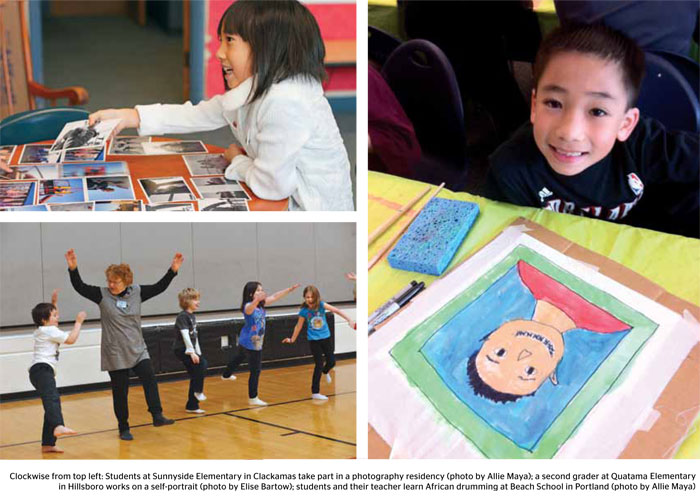ARTS EDUCATION
The Right Brain Initiative closes the imagination gap

AS SCHOOLS CONTINUE to grapple with state funding shortages and limited resources, RACC’s Right Brain Initiative is growing, helping to fill the gaps in arts education.
The goal of the program, which launched in January 2009, is to restore and enhance arts education for all K–8 students in the region. In the 2011-2012 school year the program grew to 31 schools across five school districts—Gresham-Barlow, Hillsboro, North Clackamas, Oregon Trail and Portland Public Schools.
One reason The Right Brain Initiative continues to grow is a new service delivery model that doesn’t require districts to meet their $15-per-student investment until the third year of a school’s involvement. Program manager Marna Stalcup emphasizes that participation is not dependent on a school’s fundraising capabilities. “We want this for every child across the board.” Funding for this new model, as well as the program overall, is made possible thanks to the generous support of many public and private partners (listed on page 13).
The two-year introduction period, adds Stalcup, not only makes it easier on district budgets but also gives teachers, principals and parents time to develop an understanding of the program and its benefits. Teachers and artists are trained to work together to integrate the arts in classrooms, skills the teachers can continue to use year after year even after the artists move on to other projects or other schools. The Right Brain Initiative integrates the arts in other subjects to add context to lessons like history, science, math and geography, creating memorable experiences that help students engage with what they’re learning in new ways.
Kim Strelchun saw the early days of Right Brain as a Jackson Elementary (in Hillsboro) parent, and has helped document artists’ residencies. She praises the program as a way to capture “the many languages and ways in which children speak.” She’s seen a student who had trouble writing express just how much he knew about a frog’s life-cycle in paint and clay. The public-speaking chops her own child acquired from an Oregon Children’s Theatre residency are “amazing life skills.” One key to the program’s growth is communicating with parents the value of these lasting, cross-curricular approaches. “It’s so much more than just, ‘Your child learned to sculpt with clay today,’” she says.
In addition to local eyes on the program, Right Brain also has a national spotlight thanks to appearances in The Huffington Post and the National Endowment for the Arts’ blog, as well as an ongoing role with the Kennedy Center’s “Any Given Child” initiative (see page 5). Stalcup says that “other communities are looking with great interest at our efforts to ensure arts education for every student.”![]()
